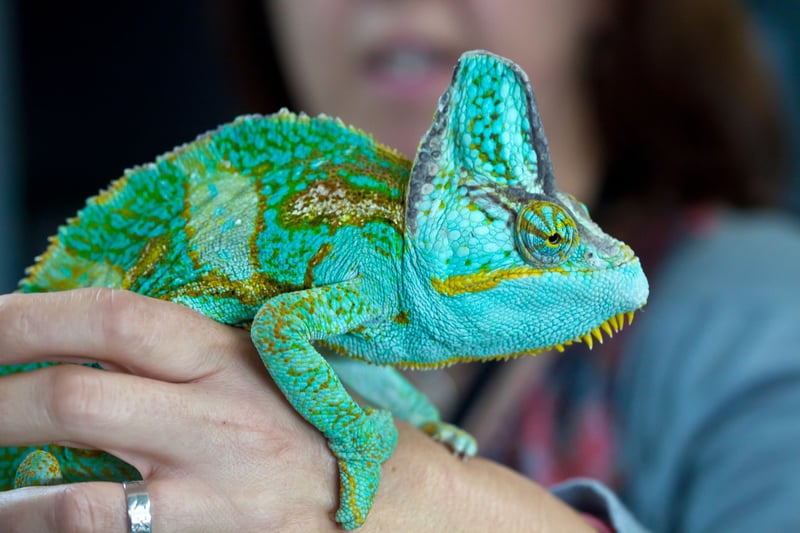
Reptiles are a diverse group of animals, constantly adapting to survive and to suit their environment. But can well-intentioned pet owners meet their complex needs?
Having evolved from amphibians around 380 million years ago, reptiles been around much longer than humans.
They inhabit all continents, and exist in a range of shapes and sizes. For example, the mighty Komodo dragon can grow up to three metres long, and yet the tiny leaf chameleon is smaller than the average person’s thumbnail.
Most reptiles are ‘cold blooded’ meaning they regulate their body temperature by moving to different types of environments. For instance, if they need to warm up they’ll move to a sunny spot, and if they need to cool down they will move to the shade.
Maternal care, play and tool use
Some believe reptiles are primitive and perform only basic behaviours. However, scientists have uncovered fascinating facts about the complex lives of many reptilian species.
For example, Nile crocodiles take care of their eggs by incubating and guarding them from predators [5]. Mother Nile crocodiles have been observed helping their young during hatching, when their hatchlings call for assistance [5]. Crocodiles have even been observed playing with moving objects [1], and using tools made from sticks and twigs to capture prey [2].
Amazing adaptations
We know that in the wild, chameleons change colour to camouflage themselves. Some chameleons can change to a variety of colours, including pink, yellow and blue. This helps protect them from predators.
Harmless Scarlet kingsnakes are known to mimic poisonous deadly coral snakes. They do this to trick predators to not attack them [3].
Watch a chameleon changing colour in this video.
Complex needs
Reptiles have complex species-specific needs. This includes specific dietary requirements, and the need for certain levels of heat and light to remain healthy. They also need space and enrichment to ensure their physical and mental welfare.
Exotic pets
Increasingly, reptiles are becoming popular pets, with many people keeping snakes, lizards and turtles in their homes. Every day, thousands of animals, including reptiles, are taken from the wild and bred in captivity to supply the exotic pet trade.
Ensuring the welfare of exotic pets including reptiles can be complicated [4]. Often, despite good intentions, it is extremely challenging for pet owners to meet the complex needs of their reptile [4]. They may not have the appropriate knowledge needed, or be able to provide a suitable living environment.
In the wild, reptiles demonstrate complex behaviours. Each individual reptile should be able to perform these. But unfortunately, when they are kept in artificial environments as pets, this is not always possible.
Protecting reptiles from the pet trade
We’re helping to end the suffering of reptiles and other animals in the ‘exotic’ pet trade, by working with governments to improve policies. We’re also investigating where and how exotic pets are acquired.
We’ll be calling on you to help protect reptiles and other animals in the exotic pet trade as we prepare for a new campaign in 2018.
Love this? Read Gemma's last blog about pigs, and why they don’t deserve the negative labels associated with their name.
Further reading
[1] Dinets, V. 2015. “Play Behavior in Crocodilians.” Animal Behavior and Cognition 2 (21): 49–55.
[2] Dinets, V., J.C. Brueggen, and J.D. Brueggen. 2013. “Crocodilians Use Tools for Hunting.” Ethology Ecology & Evolution 27 (1). Taylor & Francis: 74–78.
[3] Kikuchi, D. W., & Pfennig, D. W. (2013). Imperfect mimicry and the limits of natural selection. The Quarterly review of biology, 88(4), 297-315.
[4] Schuppli, C. A., Fraser, D., & Bacon, H. J. (2014). Welfare of non-traditional pets. Revue scientifique et technique (International Office of Epizootics), 33(1), 221-231.
[5] Vergne, A.L., and N Mathevon. 2008. “Crocodile Egg Sounds Signal Hatching Time.” Current Biology 18 (12): R513-4.